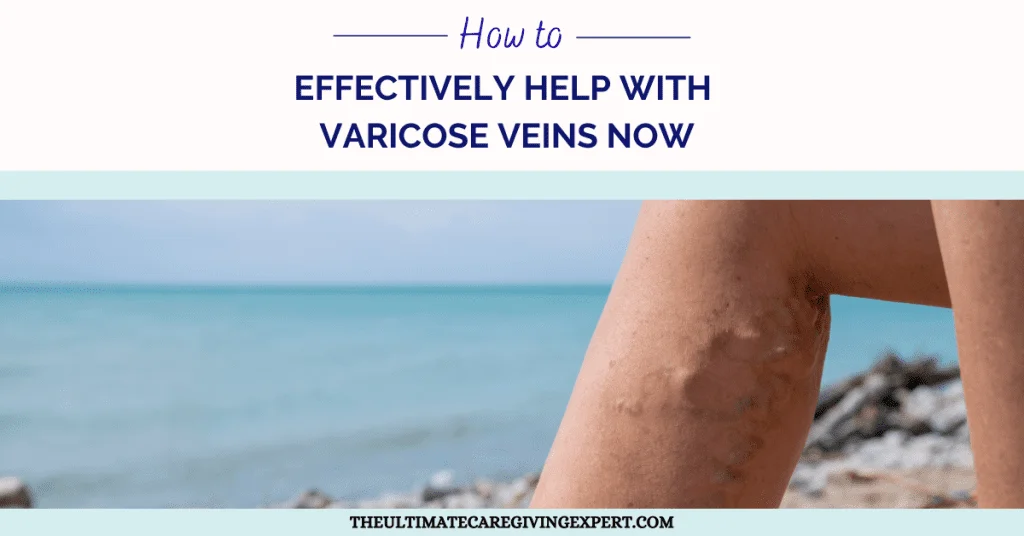How To Effectively Help With Varicose Veins Now

What are varicose veins?
Varicose veins are enlarged, twisted, and often bulging veins that appear beneath the skin’s surface, typically in the legs or feet. They occur when the valves within the veins are not functioning correctly, causing blood to pool in the affected veins. This can cause the veins to become enlarged and visible through the skin.
Varicose veins can be uncomfortable or painful and may lead to complications such as skin ulcers or blood clots. They are more common in women than men and can be caused by various factors, including age, genetics, pregnancy, and standing or sitting for long periods.
Treatment for varicose veins may include lifestyle changes such as exercise or weight loss, compression stockings to improve circulation or medical procedures such as vein stripping or laser treatment.
Why do varicose veins hit the elderly the most challenging?
Varicose veins can affect people of all ages, but they are more common in older adults. There are several reasons why varicose veins can hit the elderly the hardest:
-
Aging:
As we age, the walls of our veins can weaken, causing them to stretch and become less elastic. This can make it harder for the veins to return blood to the heart, leading to varicose veins.
-
Genetics:
Varicose veins can run in families, and some people may inherit a predisposition to the condition. As people age, their risk of developing varicose veins increases if they have a family history.
-
Lifestyle factors:
Over time, lifestyle factors such as a sedentary lifestyle or being overweight can increase the risk of varicose veins. These factors can accumulate over time, making varicose veins more likely to occur in older adults.
-
Hormonal changes:
Hormonal changes that occur with age, such as menopause in women, can affect the veins and increase the risk of varicose veins.
-
Previous medical conditions:
Previous medical conditions, such as blood clots or injuries to the veins, can increase the risk of varicose veins as people age.
Overall, varicose veins can be a natural part of the aging process, and while they may not always be preventable, some steps can be taken to reduce the risk of developing them. These include maintaining a healthy weight, staying active, and avoiding prolonged periods of sitting or standing.
What are the symptoms of varicose veins in the elderly?
Varicose veins in the elderly can cause various symptoms, varying in severity from person to person. However, some common symptoms of varicose veins in the elderly may include the following:
-
Visible veins:
Varicose veins can appear as blue or purple veins that are twisted and bulging and can be seen just beneath the skin’s surface.
-
Swelling:
The affected area may be swollen, particularly around the ankles.
-
Aching or discomfort:
Many elderly individuals with varicose veins experience aching or pain in the affected area, which can worsen after standing or sitting for long periods.
-
A heavy or tired feeling in the legs:
Some people may feel as though their legs are heavy or tired, particularly after a long day.
-
Itching or burning:
Itching or burning sensations may occur in the affected area.
-
Muscle cramps:
Some people may experience muscle cramps in the legs, particularly at night.
-
Skin changes:
Sometimes, the skin around the affected area may become discolored, thickened, or dry and more prone to developing ulcers or other skin conditions.
It’s important to note that not everyone with varicose veins experiences symptoms; in some cases, treatment may not be necessary. However, if varicose veins are causing discomfort or other symptoms, various treatment options can help alleviate the symptoms and reduce the risk of complications.
What are the risk factors of varicose veins?
Several risk factors can increase the likelihood of developing varicose veins. These include:
-
Age:
As people age, their risk of developing varicose veins increases.
-
Gender:
Women are more likely than men to develop varicose veins.
-
Genetics:
A family history of varicose veins can increase the risk of developing the condition.
-
Pregnancy:
During pregnancy, hormonal changes and increased pressure on the veins can increase the risk of varicose veins.
-
Obesity:
Being overweight or obese can put added pressure on the veins and increase the risk of varicose veins.
-
Standing or sitting for long periods:
Jobs or activities involving prolonged standing or sitting can increase the risk of varicose veins.
-
Previous blood clots or injuries:
A history of blood clots or damage to the veins can increase the risk of varicose veins.
-
Birth control pills or hormone replacement therapy:
Some medications, such as birth control pills or hormone replacement therapy, can increase the risk of varicose veins.
-
Sun exposure:
Sun exposure can cause the skin to lose elasticity and increase the risk of varicose veins.
It’s important to note that while these risk factors can increase the likelihood of developing varicose veins, they do not necessarily guarantee that the condition will occur. Making lifestyle changes such as maintaining a healthy weight, staying active, and avoiding prolonged periods of standing or sitting can help reduce the risk of varicose veins.
How to deal with Varicose veins in the elderly
Treatment to get rid of help varicose veins
-
Compression stockings
-
Exercise
-
Dietary changes
Natural treatments for varicose veins
-
Natural herbs
-
Bioflavonoid
What to do if you must see a physician
-
Write down any symptoms you’re experiencing, including any that may seem unrelated to varicose veins.
-
Write down critical personal information, including a varicose or spider veins family history.
-
Make a list of all medications, vitamins, or supplements you take.
-
Write down questions to ask your doctor.

